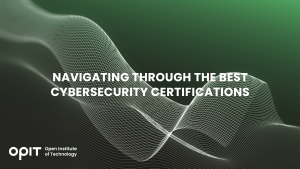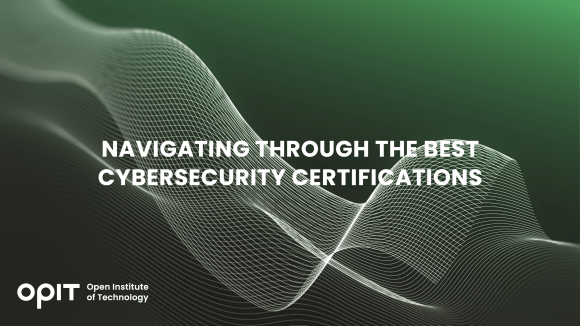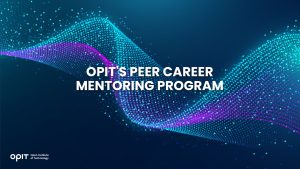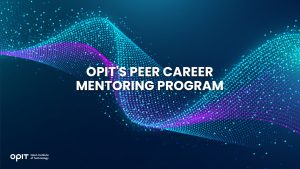

The world is becoming a more dangerous place, especially where company data and system integrity are concerned. Globally, data breaches cost organizations an average of $4.45 million in 2023, and business owners should not expect good news when the 2024 figures are made available.
The increasing threats of ransomware and phishing, two of the most prevalent threats, have motivated many businesses to increase their focus on cybersecurity. The result is increased demand for cybersecurity professionals. For those thinking about a career in the ever-evolving field of cybersecurity, learning more about the best cybersecurity certifications is essential.
Understanding the Cybersecurity Certification Landscape
As the sophistication of cyberattacks grows, so does the demand for IT professionals with certifications or degrees. Prospective employers need to know that the staff they onboard will add value to the organization. One of the ways these employers can enjoy peace of mind is by knowing that their employees are up to date with the latest developments in the cybersecurity field.
Put simply, a certificate validates the skills and knowledge of the holder. That can make all the difference when it comes to professional development. However, that certification must be provided by a recognized and accredited education provider. Finding the best cybersecurity certification can be a daunting task due to the wealth of options. Making the right decision is essential.
Identifying the Best Certifications for Cybersecurity
CyberSeek research has revealed that only 72 cybersecurity professionals are available for every 100 cybersecurity jobs (from September 2022 to August 2023). That means that demand for certified professionals is at an all-time high.
Given the opportunities in the cybersecurity field, it is no surprise that the field of certification is extremely competitive. However, as with most educational offerings, there are good certifications, and there are great certifications.
What factors should the prospective student take into account when making their choice?
- Industry recognition. A great supplier of cybersecurity certifications will usually showcase the companies that recognize their certifications as world-class. It’s a sure sign that they can deliver exceptional career opportunities.
- Real-world experience. The best cybersecurity certifications will include coursework that combines the theoretical with the practical. Look for certifications that have components offering students experience with real-world challenges.
- Accreditation. Ensure that the cybersecurity certification provider is accredited by a leading qualifications body. An example is accreditation as an Online Higher Education institution by regulatory bodies like the MFHEA (under the European Qualification Framework).
- Flexibility. It is more and more common for certification courses to be offered over the internet. These courses allow the student to study when and where they want.
- Scope of offerings. The cybersecurity field is complex, so make sure that the cybersecurity certification you choose has coursework that applies to your vision for professional growth.
Whether you opt for a consulting role, a specialization, or see yourself as a future board member choosing the best cybersecurity certification is vital.
Exploring the Best Cybersecurity Certificate Programs
Choose your program carefully. Although most cybersecurity jobs require at least a bachelor’s degree, many hiring managers will focus on candidates who add value through top cybersecurity certifications that complement their existing qualifications.
1. Google Cybersecurity Professional Certificate
For those starting on their cybersecurity journey, the cybersecurity certification from Google is an attractive option. The certification focuses on on-demand skills, and you can complete your studies in around six months. During the flexible course, students will learn about the importance of cybersecurity practices and how those practices impact organizations.
This foundational certification is ideal for those seeking a career as a cybersecurity analyst, security operations center (SOC) analyst, or security analyst.
2. CompTIA Security+
This certification is ideal for students looking to build foundational skills for almost any cybersecurity role. It provides companies with a validation that the certificate holder is able to monitor and secure mobile and cloud applications and the Internet of Things (IoT) environments. The best cybersecurity certificates also ensure students understand the laws and regulations related to risk and compliance.
This certification can be the foundation of a career as a systems administrator, security engineer, IT auditor, or cloud engineer (among others).
3. Certified Information Systems Security Professional (CISSP)
For professionals who want to take their cybersecurity skills and careers to new heights, the CISSP certification ticks all the right boxes. It underlines the applicant’s experience in IT security and their skills in developing, implementing, and monitoring a state-of-the-art cybersecurity program.
Students will require five years of cumulative work experience and a four-year degree in computer science – part-time work or paid internships count towards work experience.
This certification will open up opportunities as a chief information security officer, a security administrator, or a top-flight security consultant.
There are numerous programs for motivated professionals interested in either launching or furthering a career in cybersecurity, but a recognized certification from an accredited and trusted education provider is the key to success.
OPIT’s MSc in Enterprise Cybersecurity: A Unique Opportunity
OPIT’s postgraduate MSc in Enterprise Cybersecurity will take between a year and 18 months to complete. Courses are delivered online, allowing students to learn when and where they prefer.
This certification is designed to align with the four most important foundational industry certifications: CISSP, CISM, CRISC, and CEH.
The program provides employers with a certified professional skilled in both technical and managerial roles, fulfilling an urgent need for multidisciplinary cybersecurity resources. The coursework combines core theoretical concepts, real-world application, and soft skills, dovetailing neatly with the strategic needs of the modern organization.
The Master’s from OPIT is the best cybersecurity certification for IT professionals interested in a career as:
- Chief Information Security Officer (CISO)
- Security Solutions Architect
- Cybersecurity Manager/Director
- Cybersecurity Risk Analyst
- Cybersecurity Compliance Officer
- Incident Response Manager
- Cloud Security Manager
The Advantage of a Comprehensive Education With OPIT
The business world, and especially the world of cybersecurity, is complex and fast-evolving. Businesses require employees with an education aligned with the needs of the industry to cope with the ever-accelerating rate of change.
The best cybersecurity certifications, such as the MSc in Enterprise Cybersecurity from OPIT, provide a mix of technical and management skills aligned with industry demands and standards for a holistic educational approach. This allows graduates to deepen their understanding of the challenges of cybersecurity issues and how they impact business strategy and day-to-day operations.
Elevate Your Career With OPIT
The cybersecurity environment is complex. Employers want to know that their IT professionals can deal with complexity. This makes getting the best cybersecurity certification essential.
The reputation and accreditation of the certificate provider are essential, but keep your chosen career path in mind. Make sure that the certificate coursework combines theory and practical cybersecurity experience. The OPIT MSc in Enterprise Cybersecurity provides professionals with a unique career-focused advantage by integrating certification preparation with accessible, specialized education.
The result is a well-rounded, expert employee who is intimately familiar with the evolving challenges of cybersecurity, and that is the secret of success.
Related posts

Source:
- Raconteur, published on November 06th, 2025
Many firms have conducted successful Artificial Intelligence (AI) pilot projects, but scaling them across departments and workflows remains a challenge. Inference costs, data silos, talent gaps and poor alignment with business strategy are just some of the issues that leave organisations trapped in pilot purgatory. This inability to scale successful experiments means AI’s potential for improving enterprise efficiency, decision-making and innovation isn’t fully realised. So what’s the solution?
Although it’s not a magic bullet, an AI operating model is really the foundation for scaling pilot projects up to enterprise-wide deployments. Essentially it’s a structured framework that defines how the organisation develops, deploys and governs AI. By bringing together infrastructure, data, people, and governance in a flexible and secure way, it ensures that AI delivers value at scale while remaining ethical and compliant.
“A successful AI proof-of-concept is like building a single race car that can go fast,” says Professor Yu Xiong, chair of business analytics at the UK-based Surrey Business School. “An efficient AI technology operations model, however, is the entire system – the processes, tools, and team structures – for continuously manufacturing, maintaining, and safely operating an entire fleet of cars.”
But while the importance of this framework is clear, how should enterprises establish and embed it?
“It begins with a clear strategy that defines objectives, desired outcomes, and measurable success criteria, such as model performance, bias detection, and regulatory compliance metrics,” says Professor Azadeh Haratiannezhadi, co-founder of generative AI company Taktify and professor of generative AI in cybersecurity at OPIT – the Open Institute of Technology.
Platforms, tools and MLOps pipelines that enable models to be deployed, monitored and scaled in a safe and efficient way are also essential in practical terms.
“Tools and infrastructure must also be selected with transparency, cost, and governance in mind,” says Efrain Ruh, continental chief technology officer for Europe at Digitate. “Crucially, organisations need to continuously monitor the evolving AI landscape and adapt their models to new capabilities and market offerings.”
An open approach
The most effective AI operating models are also founded on openness, interoperability and modularity. Open source platforms and tools provide greater control over data, deployment environments and costs, for example. These characteristics can help enterprises to avoid vendor lock-in, successfully align AI to business culture and values, and embed it safely into cross-department workflows.
“Modularity and platformisation…avoids building isolated ‘silos’ for each project,” explains professor Xiong. “Instead, it provides a shared, reusable ‘AI platform’ that integrates toolchains for data preparation, model training, deployment, monitoring, and retraining. This drastically improves efficiency and reduces the cost of redundant work.”
A strong data strategy is equally vital for ensuring high-quality performance and reducing bias. Ideally, the AI operating model should be cloud and LLM agnostic too.
“This allows organisations to coordinate and orchestrate AI agents from various sources, whether that’s internal or 3rd party,” says Babak Hodjat, global chief technology officer of AI at Cognizant. “The interoperability also means businesses can adopt an agile iterative process for AI projects that is guided by measuring efficiency, productivity, and quality gains, while guaranteeing trust and safety are built into all elements of design and implementation.”
A robust AI operating model should feature clear objectives for compliance, security and data privacy, as well as accountability structures. Richard Corbridge, chief information officer of Segro, advises organisations to: “Start small with well-scoped pilots that solve real pain points, then bake in repeatable patterns, data contracts, test harnesses, explainability checks and rollback plans, so learning can be scaled without multiplying risk. If you don’t codify how models are approved, deployed, monitored and retired, you won’t get past pilot purgatory.”
Of course, technology alone can’t drive successful AI adoption at scale: the right skills and culture are also essential for embedding AI across the enterprise.
“Multidisciplinary teams that combine technical expertise in AI, security, and governance with deep business knowledge create a foundation for sustainable adoption,” says Professor Haratiannezhadi. “Ongoing training ensures staff acquire advanced AI skills while understanding associated risks and responsibilities.”
Ultimately, an AI operating model is the playbook that enables an enterprise to use AI responsibly and effectively at scale. By drawing together governance, technological infrastructure, cultural change and open collaboration, it supports the shift from isolated experiments to the kind of sustainable AI capability that can drive competitive advantage.
In other words, it’s the foundation for turning ambition into reality, and finally escaping pilot purgatory for good.

The Open Institute of Technology (OPIT) is the perfect place for those looking to master the core skills and gain the fundamental knowledge they need to enter the exciting and dynamic environment of the tech industry. While OPIT’s various degrees and courses unlock the doors to numerous careers, students may not know exactly which line of work they wish to enter, or how, exactly, to take the next steps.
That’s why, as well as providing exceptional online education in fields like Responsible AI, Computer Science, and Digital Business, OPIT also offers an array of career-related services, like the Peer Career Mentoring Program. Designed to provide the expert advice and support students need, this program helps students and alumni gain inspiration and insight to map out their future careers.
Introducing the OPIT Peer Career Mentoring Program
As the name implies, OPIT’s Peer Career Mentoring Program is about connecting students and alumni with experienced peers to provide insights, guidance, and mentorship and support their next steps on both a personal and professional level.
It provides a highly supportive and empowering space in which current and former learners can receive career-related advice and guidance, harnessing the rich and varied experiences of the OPIT community to accelerate growth and development.
Meet the Mentors
Plenty of experienced, expert mentors have already signed up to play their part in the Peer Career Mentoring Program at OPIT. They include managers, analysts, researchers, and more, all ready and eager to share the benefits of their experience and their unique perspectives on the tech industry, careers in tech, and the educational experience at OPIT.
Examples include:
- Marco Lorenzi: Having graduated from the MSc in Applied Data Science and AI program at OPIT, Marco has since progressed to a role as a Prompt Engineer at RWS Group and is passionate about supporting younger learners as they take their first steps into the workforce or seek career evolution.
- Antonio Amendolagine: Antonio graduated from the OPIT MSc in Applied Data Science and AI and currently works as a Product Marketing and CRM Manager with MER MEC SpA, focusing on international B2B businesses. Like other mentors in the program, he enjoys helping students feel more confident about achieving their future aims.
- Asya Mantovani: Asya took the MSc in Responsible AI program at OPIT before taking the next steps in her career as a Software Engineer with Accenture, one of the largest IT companies in the world, and a trusted partner of the institute. With a firm belief in knowledge-sharing and mutual support, she’s eager to help students progress and succeed.
The Value of the Peer Mentoring Program
The OPIT Peer Career Mentoring Program is an invaluable source of support, inspiration, motivation, and guidance for the many students and graduates of OPIT who feel the need for a helping hand or guiding light to help them find the way or make the right decisions moving forward. It’s a program built around the sharing of wisdom, skills, and insights, designed to empower all who take part.
Every student is different. Some have very clear, fixed, and firm objectives in mind for their futures. Others may have a slightly more vague outline of where they want to go and what they want to do. Others live more in the moment, focusing purely on the here and now, but not thinking too far ahead. All of these different types of people may need guidance and support from time to time, and peer mentoring provides that.
This program is also just one of many ways in which OPIT bridges the gaps between learners around the world, creating a whole community of students and educators, linked together by their shared passions for technology and development. So, even though you may study remotely at OPIT, you never need to feel alone or isolated from your peers.
Additional Career Services Offered by OPIT
The Peer Career Mentoring Program is just one part of the larger array of career services that students enjoy at the Open Institute of Technology.
- Career Coaching and Support: Students can schedule one-to-one sessions with the institute’s experts to receive insightful feedback, flexibly customized to their exact needs and situation. They can request resume audits, hone their interview skills, and develop action plans for the future, all with the help of experienced, expert coaches.
- Resource Hub: Maybe you need help differentiating between various career paths, or seeing where your degree might take you. Or you need a bit of assistance in handling the challenges of the job-hunting process. Either way, the OPIT Resource Hub contains the in-depth guides you need to get ahead and gain practical skills to confidently move forward.
- Career Events: Regularly, OPIT hosts online career event sessions with industry experts and leaders as guest speakers about the topics that most interest today’s tech students and graduates. You can join workshops to sharpen your skills and become a better prospect in the job market, or just listen to the lessons and insights of the pros.
- Internship Opportunities: There are few better ways to begin your professional journey than an internship at a top-tier company. OPIT unlocks the doors to numerous internship roles with trusted institute partners, as well as additional professional and project opportunities where you can get hands-on work experience at a high level.
In addition to the above, OPIT also teams up with an array of leading organizations around the world, including some of the biggest names, including AWS, Accenture, and Hype. Through this network of trust, OPIT facilitates students’ steps into the world of work.
Start Your Study Journey Today
As well as the Peer Career Mentoring Program, OPIT provides numerous other exciting advantages for those who enroll, including progressive assessments, round-the-clock support, affordable rates, and a team of international professors from top universities with real-world experience in technology. In short, it’s the perfect place to push forward and get the knowledge you need to succeed.
So, if you’re eager to become a tech leader of tomorrow, learn more about OPIT today.
Have questions?
Visit our FAQ page or get in touch with us!
Write us at +39 335 576 0263
Get in touch at hello@opit.com
Talk to one of our Study Advisors
We are international
We can speak in:


